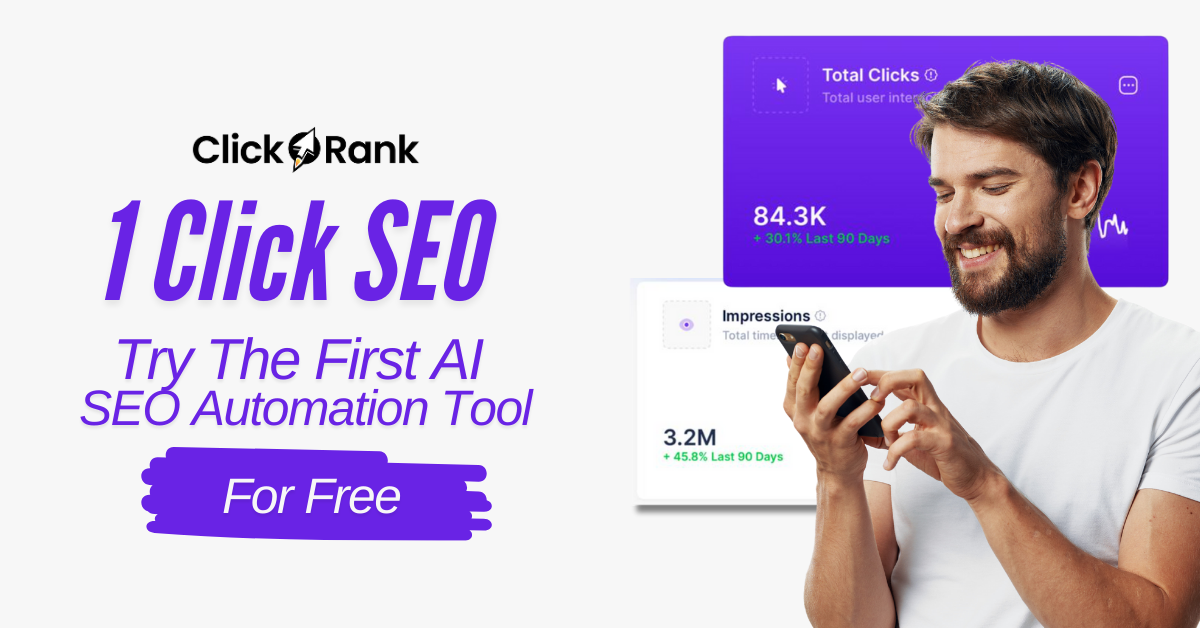Let’s kick things off with a confession: a few years ago, I helped a neighborhood café set up their website, thinking a handful of keywords sprinkled here and there would magically boost their search rankings. Spoiler alert: it didn’t. It turns out, much like my disastrous attempt at homemade sourdough, SEO success for local businesses only comes with the right ingredients and a pinch of patience. In this blog, I’ll pull back the curtain on the biggest SEO blunders I’ve seen (yes, including my own), and share how to bake up a winning local SEO strategy—no half-baked efforts allowed.
Mistake #1: Treating Google Business Profiles Like an Afterthought
Let’s be honest—how many times have you Googled a business, only to find their hours are wrong, the address is off, or the photos look like they were taken with a potato? It happens more than you’d think. I once stumbled across a local salon’s Google Business Profile with a misspelled business name and hours that didn’t match reality. Guess what? I didn’t book. And I’m not alone. That’s lost clients, plain and simple.
Here’s the truth: Google Business Profile optimization isn’t just a box to tick. It’s step one for local visibility. Research shows that optimizing and claiming your Google Business Profile is critical for local SEO success and improving search rankings. If you’re treating it like an afterthought, you’re handing business to your competitors on a silver platter.
Claim, Polish, and Stand Out
First things first—claim your profile. Seriously, if you haven’t done this yet, stop reading and do it now. Once you’re in, polish every detail. Double-check your business name, address, and hours. Add real, high-quality photos (not stock images), and choose categories that actually fit your business. These are the basics, but they’re often overlooked.
Secret Features Most Business Owners Miss
- Use Posts to share updates, offers, or events—Google loves fresh content.
- Respond to every review, good or bad. Engagement boosts trust and signals activity to Google.
- Enable messaging so customers can reach you directly from your profile.
Quick wins? Add photos regularly, update your categories if your services change, and ask your happiest customers for those first few reviews. These simple steps can put you ahead of the competition.
‘A well-optimized Google Business Profile is often the first impression your business makes online.’ — Joy Hawkins
Don’t let your Google Business Profile become an afterthought. Make it your secret weapon for local SEO best practices—and watch your visibility soar.
Mistake #2: Thinking Keyword Stuffing is Still Cool (Spoiler: It’s Not)
Let’s set the scene: You’re craving donuts, so you check out a local bakery’s website. Their menu? It reads like this: “Best donuts in town! Try our best donuts for the best donut experience. Our best donuts are the best.” You get the idea. Not only does it sound robotic, but it’s also a classic case of keyword stuffing—and trust me, Google isn’t falling for it. Neither are hungry humans.
Here’s the truth: stuffing your pages with keywords like “best donuts” or “local bakery” doesn’t boost your rankings. In fact, research shows it can tank your site’s reputation and push you down the search results. Google’s algorithms have evolved; they’re looking for intent, context, and value—not a broken record. As Rand Fishkin puts it:
‘Today’s SEO is about understanding intent, not just counting keywords.’ — Rand Fishkin
So, how do you get smart about keywords? Start with keyword research tools like SEMrush, Ahrefs, or even Google’s own Keyword Planner. Pour yourself a cup of coffee, dig into what your customers are actually searching for, and look for those golden long-tail keywords—the ones that are specific, natural, and more likely to attract local customers ready to buy.
For example, instead of repeating “best donuts,” try phrases like “gluten-free donuts in Asheville” or “late-night donut delivery near me.” These are intent-driven, locally optimized, and sound like something a real person would type (or say to their voice assistant). This is the heart of local keyword optimization: using natural language that matches how your customers search, especially as voice search keeps growing.
Remember, fixing common SEO errors like keyword stuffing and focusing on targeted landing pages with localized, long-tail keywords can seriously boost your visibility—and make your website a place people actually want to visit (and revisit).
Mistake #3: Forgetting Your Phone Customers (Seriously, Are We Still Doing This?)
Let’s set the scene: It’s Friday night, you’re craving pizza, and you find a local family joint online. You’re halfway through ordering a large pepperoni on your phone—then, disaster. The mobile site crashes. No pizza, no patience, and definitely no repeat business. Sound familiar? If your mobile-friendly website isn’t up to par, you’re losing more than just hungry customers—you’re losing your spot in local search results.
Here’s the thing: Mobile first indexing isn’t just a tech buzzword. It’s Google’s way of saying, “If your site doesn’t work on phones, it doesn’t work at all.” Research shows that Google now prioritizes mobile-friendly, fast, and responsive websites for better local SEO rankings. In other words, your local SEO strategy lives or dies by your mobile experience.
‘Mobile isn’t just the future. It’s the present.’ — Eric Schmidt
Designing for Thumbs (Not Just Eyes)
Think about how people use their phones—one hand, scrolling with a thumb, usually on the go. If your buttons are too tiny, menus are buried, or images take forever to load, you’re basically telling customers to look elsewhere. Prioritize:
- Responsive design: Your site should adapt to any screen size, no pinching or zooming required.
- Fast load times: Compress images, minimize code, and ditch unnecessary plugins.
- Simple navigation: Big, tappable buttons and clear menus make life easier for everyone.
Quick Wins: Easy Mobile Tests
- Run Google’s Mobile-Friendly Test to spot issues fast.
- Order something from your own site—on your phone. Was it painless or painful?
- Ask friends or family to try it out and give honest feedback.
Don’t let a clunky mobile experience sabotage your local SEO strategy. Your customers—and Google—are watching, and they’re not waiting around for your site to catch up.
Mistake #4: Ignoring the Power of Real Reviews & Community Buzz
Picture this: you’re searching for a new coffee shop. One has a wall of glowing reviews, the other? Just crickets. Which one are you walking into? It’s a no-brainer. That’s the magic of reputation management strategies—and yet, so many local businesses overlook this simple, powerful tool.
Let’s get real: Online reviews monitoring isn’t just about damage control. It’s about building trust, boosting your local SEO, and telling your brand’s story through your customers’ eyes. Research shows that businesses with active review profiles rank higher and attract more foot traffic. But here’s where most folks slip up—they forget to respond, encourage, or even showcase those reviews. Every “thank you” or thoughtful reply is a signal to both Google and your community that you care.
Ready for a wild card? Would you trust a business with fewer than three reviews? Ask your team or your friends. Most people get a gut feeling—if there’s radio silence, something feels off. That’s why user-generated content is gold. Share customer testimonials, repost those happy Instagram stories, and let your audience do some of the talking. Not only does this create authentic buzz, but it also feeds the content machine Google loves.
Don’t forget the power of local events sponsorship and community involvement. Hosting or supporting local happenings isn’t just good karma—it’s a smart way to earn local backlinks, get mentioned in community roundups, and create share-worthy moments. Plus, it gives you a reason to connect with your audience beyond the transaction.
‘Your reputation lives and grows with every review.’ — Mike Blumenthal
So, if you’re still treating reviews and community buzz as an afterthought, it’s time to flip the script. Your reputation isn’t just a number—it’s the heartbeat of your local SEO success.
Mistake #5: Trying to Wing It Without Spyglasses (Competitor Analysis Isn’t Just for Big Brands)
Let’s be honest—who hasn’t taken a sneaky peek at a competitor’s website, just to see what they’re up to? But here’s the thing: casual snooping only gets you so far. If you want to really outsmart the competition, you need to use a competitor analysis tool and treat this like the strategic game it is. In 2025, local SEO tactics are more advanced than ever, and the businesses winning the visibility game are the ones who know exactly what their rivals are doing (and what they’re missing).
Imagine you’re running a cozy coffee shop. You notice the café down the street is suddenly ranking higher on Google. Instead of guessing, you fire up a competitor analysis tool. What do you find? Maybe they’ve built a handful of new local links from community blogs, or they’re running hyperlocal SEO campaigns targeting “best oat milk latte in [Your Neighborhood].” That’s not luck—it’s strategy. And it’s something you can absolutely replicate, or even improve upon.
Here’s how you turn those insights into small, practical wins:
- Spot gaps in your own content or local link building efforts.
- See which hyperlocal SEO campaigns are working for others and adapt them for your business.
- Find opportunities to sponsor local events or get featured in neighborhood roundups.
Remember, as Greg Gifford says:
‘The best lessons often come from the shop next door.’
So, here’s a fun challenge: If you had $100 to spend on ethical “spying,” would you invest in a premium competitor analysis tool, hire a local SEO expert for an hour, or buy coffee for your competitor’s regulars and ask what keeps them coming back? Drop your answer in the comments—let’s see who’s got the most creative (and effective) plan!
Bringing it All Together: A Recipe for Local SEO Wins
Let’s circle back to where we started: the recipe. Local SEO isn’t about throwing every ingredient into the pot and hoping for magic. It’s about knowing which habits help your business rise—and which ones quietly spoil the batch. The truth? Most local businesses miss the mark not because they lack effort, but because they’re stuck in patterns that no longer work. Maybe you’re keyword stuffing, or maybe you’ve left your Google Business Profile half-baked. These hidden habits can sabotage your progress, but the good news is, you can outsmart them.
Start with the basics. Claim and polish your Google Business Profile until it shines. Use natural, conversational keywords—think like your customers, not a robot. Make sure your website is mobile-first; after all, most local searches happen on the go. Encourage honest reviews and respond to them (yes, even the tough ones). And don’t forget to peek over the fence—competitor analysis is a secret weapon, not a luxury.
But here’s the twist: there’s no secret sauce. No overnight hack. As Darren Shaw puts it,
‘Local SEO isn’t a sprint; it’s a series of well-timed steps that lead you home.’
What really works is a blend of authentic action and patience. Research shows that SEO education for businesses—especially when tailored for local needs—empowers owners to make smarter, more strategic choices. Regular self-audits, a willingness to iterate, and a dash of humility go a long way. If you catch yourself slipping into old habits, don’t panic. Adjust, improve, and keep moving forward.
In the end, Local SEO best practices aren’t about perfection—they’re about progress. Keep refining your recipe, stay curious, and remember: your future customers are out there, searching for exactly what you offer. Make it easy for them to find you, and they’ll keep coming back for more.
TL;DR: Most local SEO headaches come from ignoring basics like Google Business Profile, overusing keywords, or neglecting mobile users. Commit to quality content, real reviews, and act locally for long-term wins.
You may be interested

